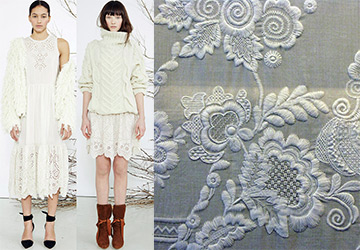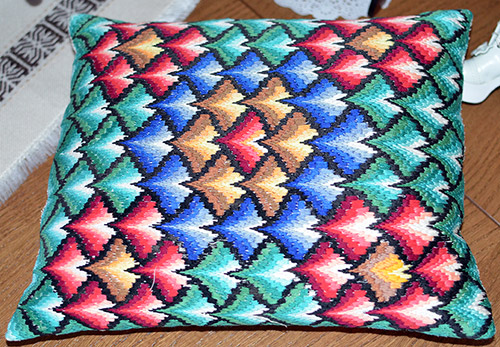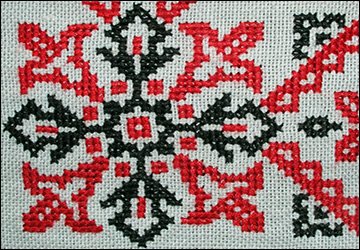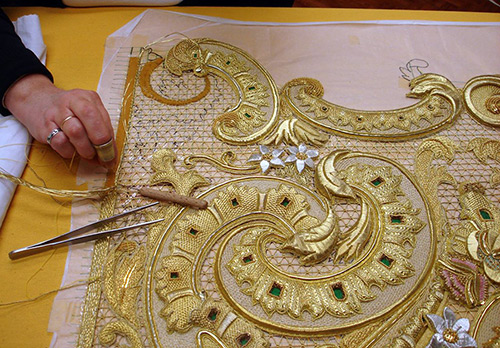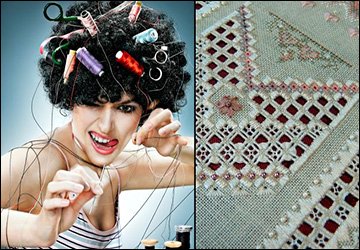ILLUSTRATIONS
Cutwork embroidery in history and photographs
"If we are overcome by boredom, we will rather resort to work, this means is unmistakable."
Cutwork embroidery is an openwork embroidery in which individual elements of a pattern are connected by jumpers, or brides. It originated in the 14th century during the Renaissance in Italy. Then it spread throughout Central and Western Europe. And in the XV-XVII centuries, women from many countries were carried away by this embroidery.
Cutwork embroidery patterns were passed on to each other, and they were transformed. Each craftswoman brought her own motives and elements into the embroidery patterns, her secrets appeared in the execution technique. Especially in this embroidery, French and Italian women have succeeded.
Embroidery was the privilege of the nobility. Luxurious collars, frills, cuffs, gloves, handkerchiefs made of thin linen, decorated with openwork patterns, could be worn by nobles and court nobility. Table and bed linen, as well as numerous interior items, adorned the apartments and palaces of wealthy people.

The nobles themselves did not hesitate to sit at needlework, which, according to art historians, was named after Cardinal Richelieu. You remember, of course, what kind of character was presented in the novels of A. Dumas, whose prototype was Cardinal Richelieu ...
Openwork embroidery captivated everyone, and therefore women's schools and workshops were opened in Europe. Most of the patterns consisted of floral motifs. Some of them had smooth breeches, in others brides with the addition of original loops, which were called pico. Pico gave the product even more expressiveness and emphasized the lace background. The outer edge was often shaped like scallops.
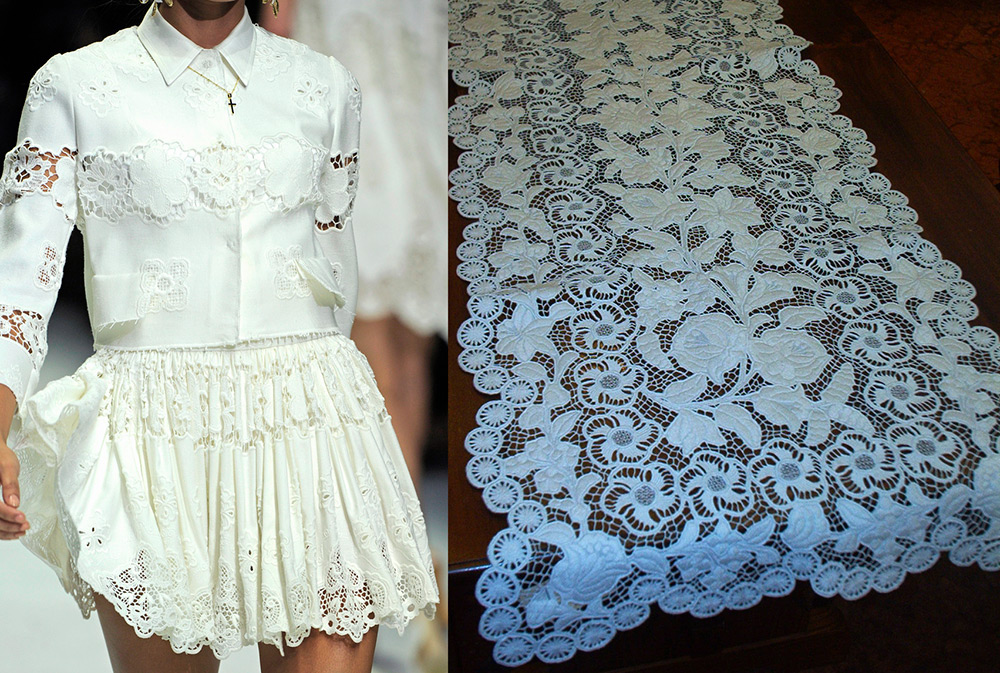
Cutwork embroidery is subdivided into embroidery with brides and without brides, done by hand or by machine. No matter what kind of openwork embroidery was performed, it required patience, skills and a long time. But the results were worth it.
And what about Cardinal Richelieu? There were many legends around his name ... In fact, he was an outstanding statesman, the first minister at the court king of france Louis XIII.
Lace in Europe was extremely valued and was a hot commodity. But in this matter, Italy occupied a dominant position, where lace business had long been developed, due to the fact that many sea trade routes passed through Italian cities, along which goods from everywhere, including from the East, passed.
Cardinal Richelieu was a patriot of France, and therefore contributed to the development of his country. He imposed heavy duties on many goods imported into France, including lace.
And he also invited the best lace-makers in Italy, created all the conditions for them to live in the country, so that they teach the art of embroidery to French women, who themselves were good lace-makers, because weaving and embroidery lace products passed from one country to another for a long time. Having familiarized themselves with Italian craftsmanship, French lace makers gradually introduced their own flavor and originality in the execution of cutwork products.
And soon France became a leader in the production of lace and openwork embroidery. The cardinal, like many other nobles, most likely wore at that time fashionable lace collars, cuffs and gloves, and they even claim that he himself loved to sit at this needlework, and was quite successful in this business. No matter what they say, it only follows that he was involved in embroidery.
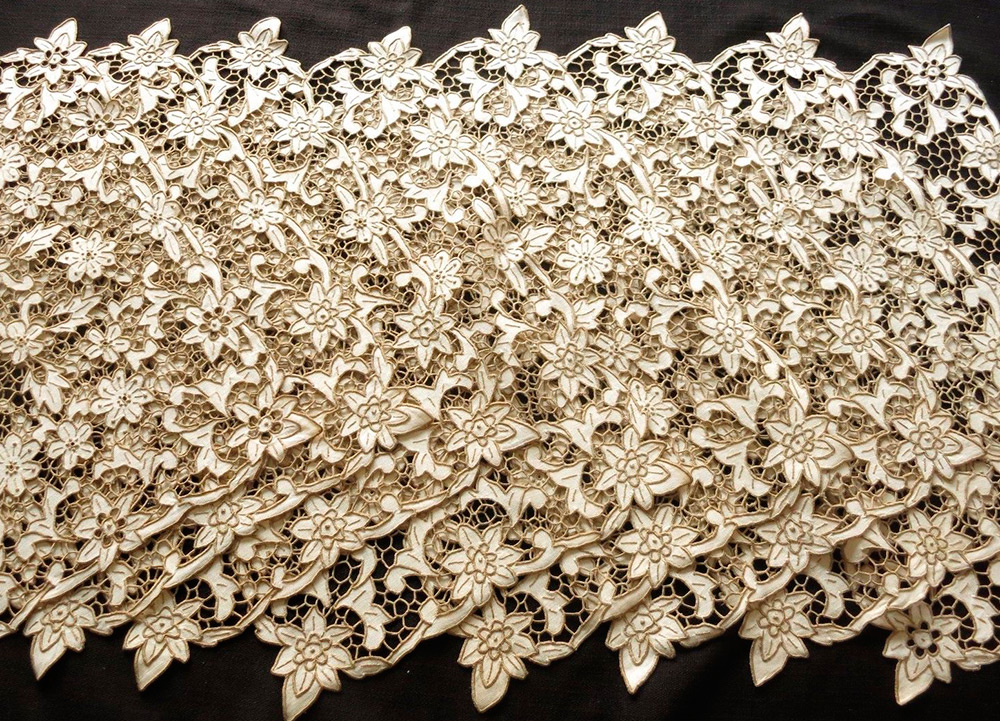
Photo below - Blumarine and Josie Natori

Embroidery today remains one of the most beautiful and noble. Recently, many designers are enthusiastically considering images decorated with embroidery, including cutwork embroidery.
Not only bed or table linen embroidered on a white linen look elegant, but also clothes decorated with exquisite openwork patterns: suits, dresses, collars, cuffs and other trim elements.
Embroidery can be done on any fabric, but if you are a beginner needlewoman, it is better to take a dense fabric in which the weave threads are clearly visible. The color of the fabric and threads can be in the same tone or in a contrasting one. The thickness of the threads should be matched to the density of the fabric.

Kate Spade and # 21
Today it is difficult to say how great was the role of the cardinal in the spread of lace embroidery in France, but during Richelieu's tenure as first minister, France turned into a state with which neighboring countries had to reckon with, and she challenged many ruling dynasties.
A real cardinal, unlike the cardinal of adventure novels, saved hundreds of lives of brave, strong, young and healthy people - he forbade duels. The cardinal contrasted religious contradictions with national unity. Unfortunately, all his real deeds have remained known only to real historians, while the inhabitants of all countries know Cardinal Richelieu through the prism of the adventures of A. Dumas, written by him two centuries later.
But cutwork embroidery can charm any of us, and it looks noble and effective.

Alexis Mabille, Yanina
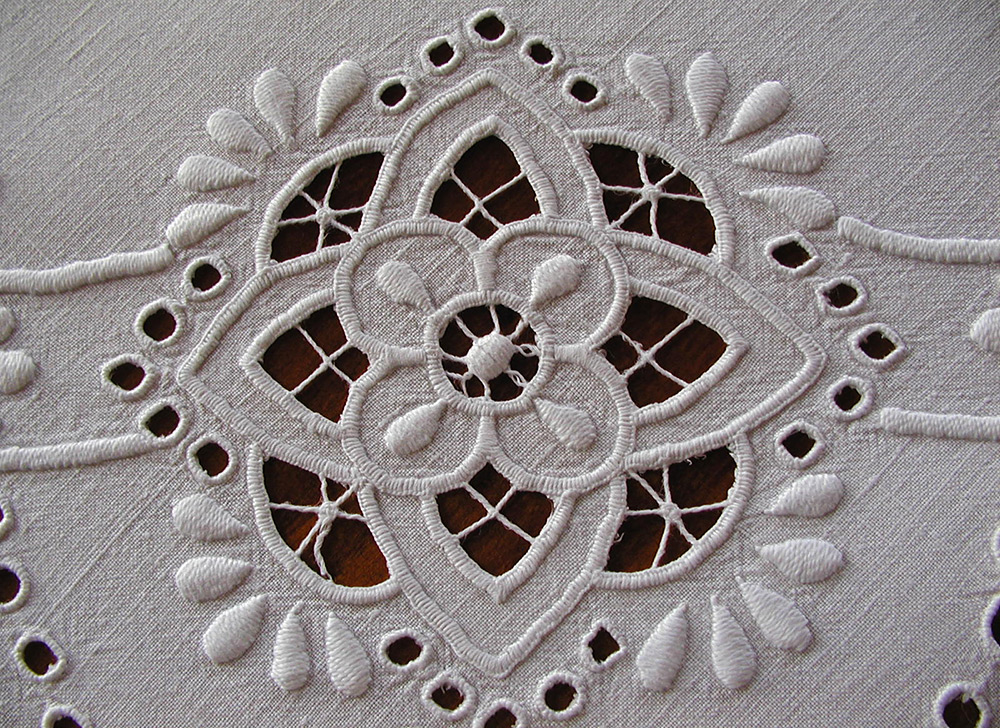
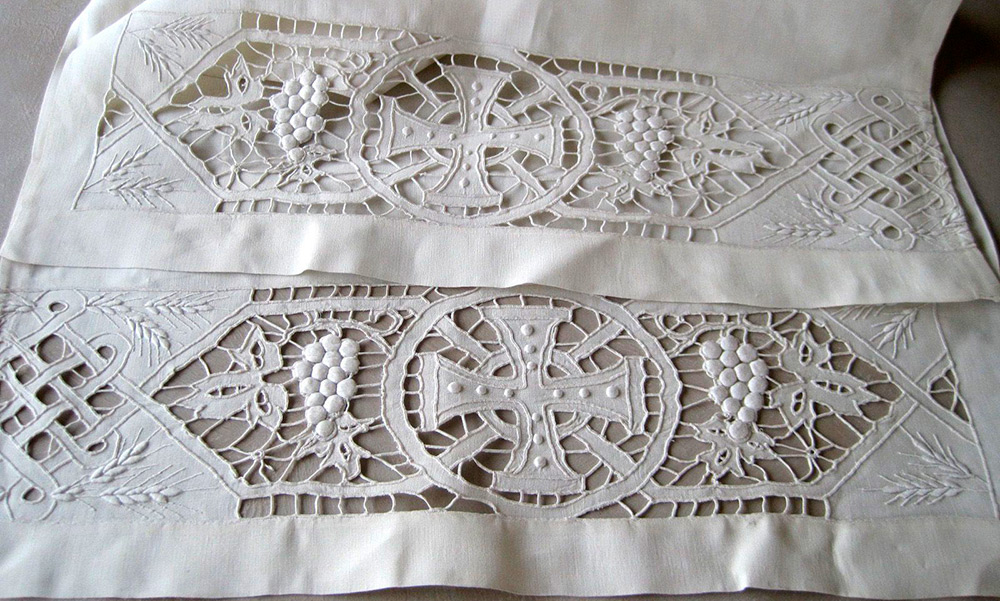
Comments and Reviews
Add a comment
Rating news
Shades of clothing that make women look younger
What shades of hair make women younger: rules and photos
Funny wedding dresses - photos and ideas
12 most expensive down jackets for the winter
How to look 25 at 40: tips from supermodels
Beautiful schoolgirls
Anti-aging haircuts and hairstyles for women
Fashionable skirts for autumn and winter
Fashionable women's trousers for the cold season
Fashionable and stylish sandals for summer 2024
Spring-summer 2024
 Fashionable dresses and tops with thin spaghetti straps
Fashionable dresses and tops with thin spaghetti straps
 Bandana tops: how to wear stylishly and beautifully
Bandana tops: how to wear stylishly and beautifully
 How to put together the perfect men's wardrobe for the summer
How to put together the perfect men's wardrobe for the summer
 Trendy shorts for spring-summer 2024
Trendy shorts for spring-summer 2024
 Fashionable skirts for spring-summer 2024: a guide to online shopping
Fashionable skirts for spring-summer 2024: a guide to online shopping
 The most fashionable dresses spring-summer 2024: styles and colors
The most fashionable dresses spring-summer 2024: styles and colors
 Fashionable total look 2024: image ideas and trends
Fashionable total look 2024: image ideas and trends

